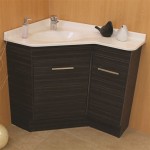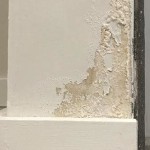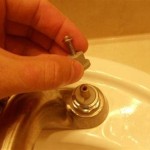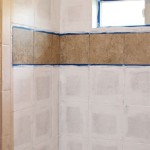How To Clear Slow Bathroom Sink Drains The Fastest Way
A slow draining bathroom sink is a common household nuisance that, if left unaddressed, can escalate into a completely clogged drain. Identifying the cause and employing prompt, effective solutions are crucial for maintaining a functional and hygienic bathroom. This article explores various methods to clear slow bathroom sink drains, focusing on the fastest and most efficient techniques.
The accumulation of hair, soap scum, toothpaste residue, and other debris within the drainpipe is the primary culprit behind slow drainage. Over time, this material hardens and constricts the flow of water. Other contributing factors can include mineral buildup from hard water and improper drain installation.
Before resorting to harsh chemical drain cleaners, it's advisable to attempt simpler, more environmentally friendly solutions. These methods are often effective for minor clogs and pose less risk to plumbing systems.
1. The Boiling Water Method: A First Line of Defense
The boiling water method is a simple and often effective first step in clearing a slow drain, particularly when the clog is composed of grease or soap scum. The high temperature of the water can melt these substances, allowing them to flow freely. To execute this method, heat a kettle or pot of water until it reaches a rolling boil.
Carefully pour the boiling water directly down the drain. It is crucial to exercise caution to avoid burns. After pouring the water, wait several minutes to observe if the drain clears. If the water drains more quickly but still slowly, repeat the process. It may take multiple applications of boiling water to fully dissolve the clog.
This method is generally safe for metal pipes, such as copper and brass. However, it should be avoided if the sink or drainpipes are made of PVC plastic, as the high heat can potentially soften or warp the plastic. Similarly, if the sink is made of porcelain, avoid pouring boiling water directly onto it, especially if the porcelain is cold, as this can cause cracking due to thermal shock. Instead, run hot tap water first to warm the sink before pouring in the boiling water.
If the boiling water method does not resolve the slow drain issue, it indicates a more substantial clog that requires a different approach.
2. The Baking Soda and Vinegar Solution: A Natural Drain Cleaner
A combination of baking soda and vinegar creates a safe and effective chemical reaction that can help to break down organic matter clogging the drain. This method is a natural alternative to harsh chemical drain cleaners and is less likely to damage plumbing systems.
To use this method, first pour one cup of baking soda down the drain. Follow this with one cup of white vinegar. The mixture will begin to fizz and bubble. Immediately cover the drain with a plug or a damp cloth to contain the reaction within the drainpipe. This prevents the carbon dioxide produced by the reaction from escaping and maximizes its ability to dislodge the clog.
Allow the mixture to sit in the drain for approximately 30 minutes. This gives the baking soda and vinegar sufficient time to break down the clog. After 30 minutes, flush the drain with hot water. If the drain is still running slowly, repeat the process. For particularly stubborn clogs, leaving the baking soda and vinegar mixture to sit overnight can increase its effectiveness.
The baking soda and vinegar method works by creating a chemical reaction that produces carbon dioxide gas. This gas creates pressure that can help to dislodge the clog. The vinegar also acts as a mild acid, which can help to dissolve some types of organic matter.
This method is generally safe for all types of plumbing, including PVC pipes, as the heat generated by the reaction is minimal. However, it is important to use the correct proportions of baking soda and vinegar to avoid creating an excessive amount of pressure, which could potentially damage older or weakened pipes.
3. The Plunger: A Physical Approach to Dislodging Clogs
A plunger is a simple but effective tool for creating suction and pressure to dislodge clogs in drains. While it may seem basic, proper technique is essential for maximizing its effectiveness. Different types of plungers exist, but a standard cup plunger is usually sufficient for bathroom sink drains.
Before using the plunger, ensure that there is standing water in the sink. This water is necessary to create a seal and allow the plunger to generate suction. If there is no standing water, add enough to cover the cup of the plunger. It's also important to prevent air from escaping through the overflow drain. This can be accomplished by plugging the overflow drain with a damp cloth or your hand.
Place the cup of the plunger directly over the drain opening, ensuring a tight seal. Push and pull the plunger up and down vigorously, maintaining the seal. The action should create a vacuum that dislodges the clog. Continue plunging for several minutes, periodically lifting the plunger to check if the water is draining. If the water drains, flush the drain with hot water to clear any remaining debris.
If the plunger does not initially clear the drain, repeat the process. Sometimes it requires multiple attempts to dislodge a stubborn clog. It may also be helpful to add more water to the sink or adjust the position of the plunger to improve the seal.
The effectiveness of the plunger depends on the type of clog. It is most effective for dislodging solid objects, such as hair or clumps of soap scum. It may be less effective for dissolving grease or soap scum that has hardened within the drainpipe.
4. The Drain Snake (Plumbing Snake): A Direct Approach to Removing Clogs
A drain snake, also known as a plumbing snake or auger, is a flexible tool designed to reach into drainpipes and physically break up or retrieve clogs. It is a more aggressive method than boiling water, baking soda and vinegar, or plunging, and it is often necessary for stubborn clogs located deeper within the drainpipe.
There are several types of drain snakes available, ranging from simple hand-cranked models to more sophisticated motorized versions. For typical bathroom sink clogs, a hand-cranked drain snake is usually sufficient.
To use a drain snake, carefully insert the end of the snake into the drain opening. Begin feeding the snake into the drainpipe, rotating the handle as you go. The rotating action helps the snake to navigate bends in the pipe and grip the clog. If you encounter resistance, continue rotating the handle to try to break up or dislodge the clog.
Once you feel that the snake has reached the clog, continue rotating the handle to either break it up or hook onto it. If you are able to hook onto the clog, slowly pull the snake back out of the drainpipe, bringing the clog with it. Be prepared for the clog to be a messy combination of hair, soap scum, and other debris.
After removing the clog, flush the drain with hot water to clear any remaining debris. It is also a good idea to clean the drain snake thoroughly to remove any residue and prevent the spread of bacteria.
When using a drain snake, it is important to be gentle to avoid damaging the drainpipe. Avoid forcing the snake, and be careful not to scratch or gouge the inside of the pipe. If you are unsure about using a drain snake, it is best to consult with a professional plumber.
5. Cleaning the P-Trap: A Targeted Approach To Common Blockages
The P-trap is a curved section of pipe located beneath the sink. Its primary function is to trap debris and prevent sewer gases from entering the bathroom. However, it is also a common location for clogs to form. Cleaning the P-trap can often resolve slow drain issues.
Before disassembling the P-trap, place a bucket or basin underneath it to catch any water or debris that may spill out. This will help to prevent a mess. It is also a good idea to wear gloves, as the water and debris in the P-trap can be unpleasant.
Carefully loosen the slip nuts that connect the P-trap to the drainpipe and the tailpiece (the pipe that connects the sink drain to the P-trap). These nuts are usually made of plastic and can be tightened by hand. Once the slip nuts are loose, carefully remove the P-trap.
Inspect the P-trap for any clogs. Use a wire hanger or a small brush to remove any debris that is blocking the flow of water. Rinse the P-trap thoroughly with water to ensure that it is completely clear.
Once the P-trap is clean, reassemble it by connecting it to the drainpipe and the tailpiece. Tighten the slip nuts by hand until they are snug. Do not overtighten the nuts, as this can damage them or the pipes.
After reassembling the P-trap, run water into the sink to check for leaks. If there are any leaks, tighten the slip nuts slightly. If the leaks persist, you may need to replace the slip nuts or the P-trap itself.
Cleaning the P-trap can be a messy job, but it is often an effective way to clear a slow drain. It also allows you to inspect the P-trap for any signs of damage or wear, which can help to prevent future plumbing problems.

How To Unclog A Slow Running Bathroom Sink Drain 10 Options

How To Clear A Clogged Drain Reviews By Wirecutter

How To Unclog A Slow Running Bathroom Sink Drain 10 Options

How To Unclog A Drain Without Calling Plumber

Slow Sink Drain 6 Diy Fixes For Before You Call A Plumber Bob Vila

How Can I Clear A Slow Drain Faq Plumbing By Jake

5 Natural Ways To Unclog A Bathroom Sink Hiller How

How To Clear A Slow Drain Quickly Mike Diamond

6 Ways To Fix Clogged Drains Keep Pipes Flowing Freely Horizon Services

How To Clear A Clogged Drain Forbes Home
Related Posts







